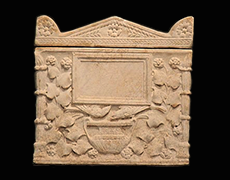
Asphodel Fields in Ancient Rome was a concept of the afterlife where the souls of the average person went after death.
The Asphodel Fields were a place of neither happiness nor pain, but a neutral place where the souls of the dead lived in a dreary, bland existence.
The Asphodel Fields were named after the asphodel plant, which was considered a symbol of death and mourning in ancient Greece and Rome. The fields were thought to be located in the underworld, or the realm of the dead, and were ruled by the god of the underworld, Pluto.

In contrast to the Elysium, which was a place of bliss and happiness for the chosen few, the Asphodel Fields were a place of dullness and boredom for the majority of the deceased.
The souls that inhabited the fields were unable to experience joy or pain, but instead existed in a state of numbness and detachment.
Despite this, the Asphodel Fields were considered a better fate than punishment in Tartarus, the underworld’s darkest and most fearsome region, where the wicked and the evil were punished for their deeds.

In ancient Rome, the concept of the Asphodel Fields was part of a larger belief system about the afterlife, which was important to the people as a way of making sense of death and providing comfort to the bereaved.
It was believed that the soul was immortal, and that it continued to exist even after death. The afterlife offered a sense of hope and comfort, knowing that the soul would live on in some form.

